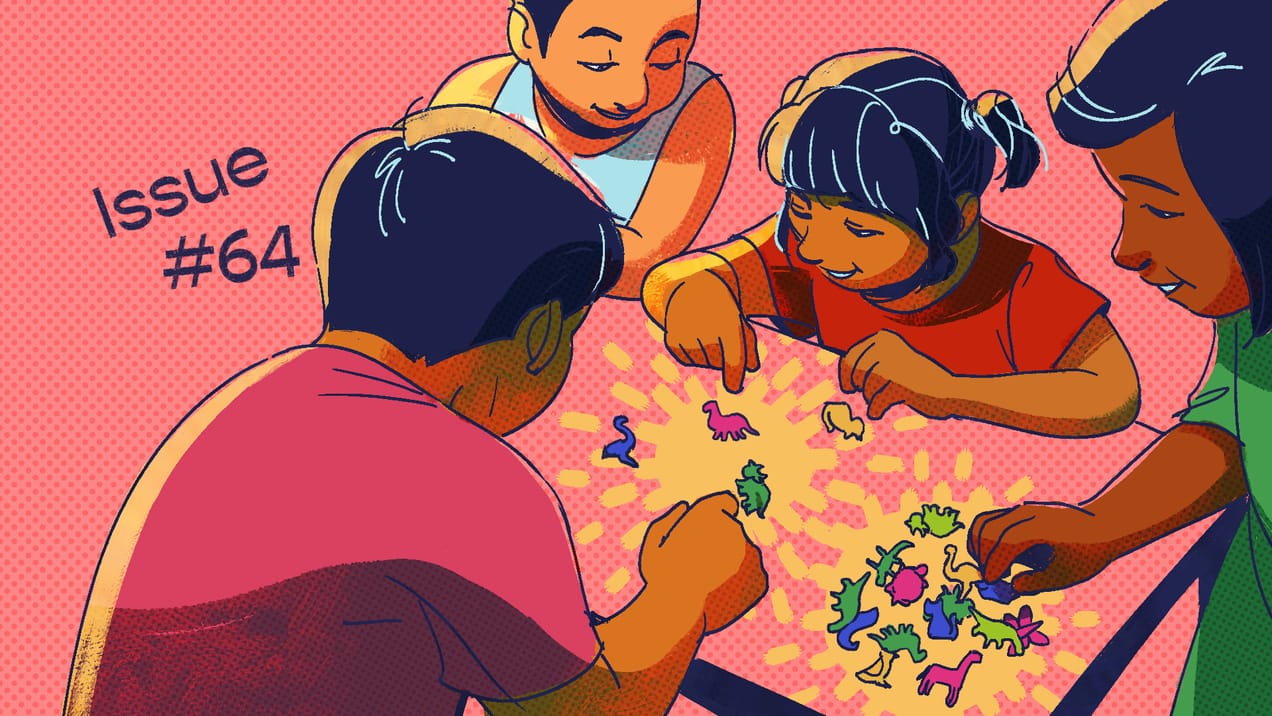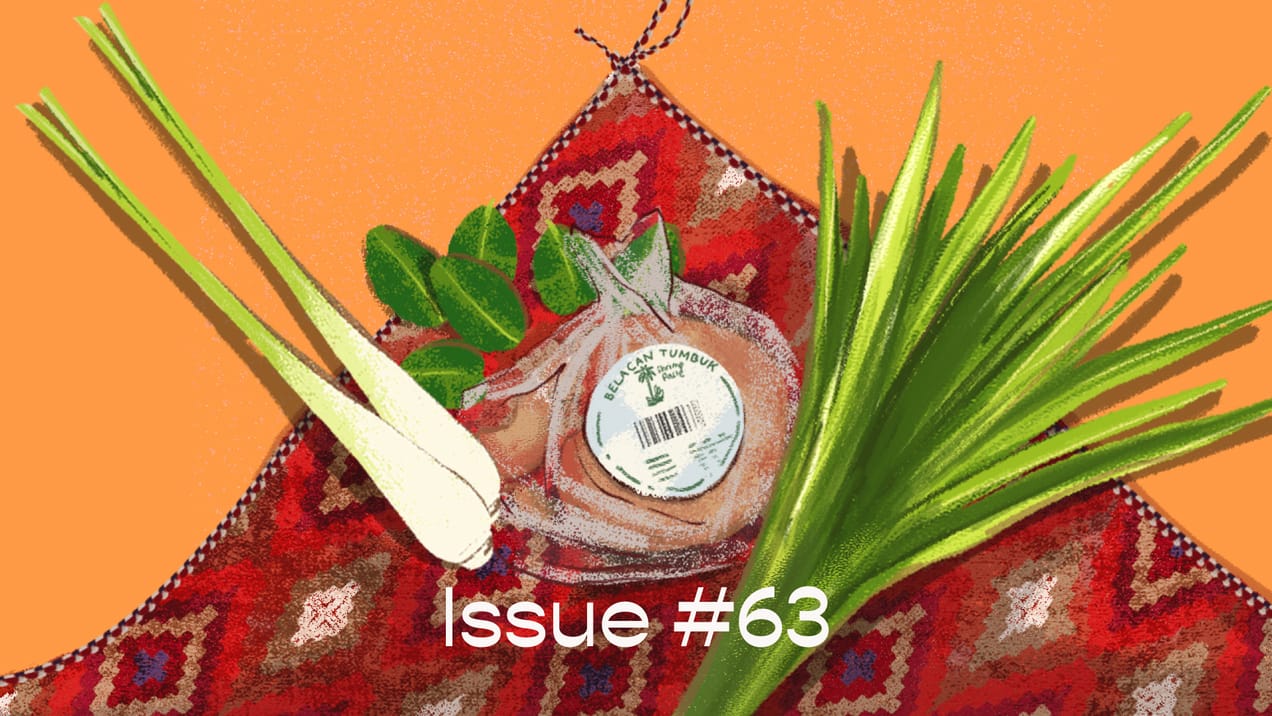|
The history of humankind is one of migration. We only ever leave our homes in search of a better life elsewhere, and that has been the force moving human beings out of Africa and into human settlements all across the world. We all seek the same things in new lands—acceptance, and a new hearth.
With the news about anti-Asian sentiment happening predominantly in "Western" parts of the world, I've been feeling acutely a sense of helplessness and sadness. Singapore, like many of these countries, is a land of immigrants. I think back to the stories that my father told me of how my grandfather left his home in Dapu, China, to start anew in Singapore—life in this port city offered him a way out of poverty. I think of how fortuitous he was in his journey, and how as a society, Singapore allowed him to call this place home.
It’s sad that there are many who are not as lucky as my grandfather. The pandemic has shown that societal cohesion was a loosely held veneer that came apart at the first instance of hardship. Instead of uniting as one people, many have used it as an opportunity to act on their deep racial biases, actively discriminating and attacking Asians.
And still, there are those who continue to search for a new home. It’s ironic that the word "refugee" stems from the French for "gone in search of refuge", but the majority of refugees are far from being safe or sheltered. Even in Singapore, I think of my tita, a foreign domestic worker who left her own children back in the Philippines to raise someone else’s kids (me). At the end of that, where does she truly belong?
From the very beginning here at Kontinentalist, we've wanted to be an empowering voice for Asia and for Asians. Demystifying or debunking misconceptions of all things Asian is important, yes. But we also want to celebrate this, to share our depth and diversity and what makes us unique—and most importantly, what makes us human like everyone else.
|
|
Zafirah outlines how anti-Asian sentiments are not just a fluke from the pandemic, but the result of years of normalising Asians as the uncivilised, exotic, dirty "Other" by the Western world.
|
|
Imagine escaping home and embarking on a dangerous sea voyage to find refuge, only to realise that another nightmare has just begun. This is the reality for Rohingya refugees who flee from Myanmar and Bangladesh by sea, only to meet abuse, human trafficking, gender-based violence, and other inhumane conditions. Hear the harrowing verbal accounts of some refugees themselves, and learn how you can help.
|
|
Singapore relies heavily on foreign domestic labour to care for their children, elderly, and homes. But this close proximity also means many domestic workers are vulnerable to exploitation and, in some cases, abuse. What rights do these workers have, and how can they be improved?
|
|
|
As a data practitioner, I use data and visualisation to make sense of issues. It's what data visualisation does best: cut through the noise and tell us what to focus on.
But data is fallible—because the humans who collect them are.
In her Instagram post, data journalist Mona Chalabi reveals the limits of data about hate crimes, in light of the emboldening of anti-Asian hate crimes in the United States.
Her visualisation uses data from the Bureau of Justice Statistics' (BJS) National Crime Victimisation Survey. Both BJS and FBI's Uniform Crime Reporting (UCR)—the principal sources of hate crimes in the United States—collect data by their type of bias: race/ethnicity/ancestry, religion, sexual orientation, disability, gender, and gender identity.
Chalabi rightly pointed out that this prevents us from looking at how these biases intersect: "I don't know what percentage of victims were women *and* Asian *and* sex workers." If we see data as a source of information guiding future actions, then we have to see how much more vulnerable people who face double, triple, or more discriminations are.
Moreover, as the Atlanta shooting has shown, these things go hand in hand. Asian women have been an exotic fantasy of White men, and sex workers on the whole face a higher risk of violence because of how sex work has been stigmatised in our societies. Under this hood of shame, they receive less protection; some even say they don't deserve it.
FBI's data gives a better idea of intersectionality, but it's all lumped under the category of "Multiple-Bias Incidents", which records offenses motivated by two or more biases. We may have the numbers, but this doesn't tell us much about the problem or how to mitigate it. And victims of these hate crimes deserve to be more than statistics in a government report.
There're more limitations about data than I can cover in this section, so I'll leave you with this additional link to check out.
Our line of work can feel impersonal sometimes—it often feels like we're mostly dealing with numbers and not directly engaging the people behind the numbers. It's a good reminder to keep in mind that behind every data point is a person. Or as Francis Gagnon so wisely put in his critique of the New York Times's COVID-19 graphic: "The reality is more than it (COVID-19) began with one person and it grew to half a million dots."

|
|
The beautiful newsletter that you see here is all thanks to Munirah! Read about how she's transitioning from print design to learning the ropes about web and data visualisation design at Kontinentalist.
|
|
Our Outlier talk on translating cultural experiences into data stories is now available on YouTube! It's only about 20 minutes long—perfect for mid-day (productive) procrastination.
|
|
Singapore's first-generation hawkers were mostly immigrants from China—and to a smaller extent from India and the Malay Archipelago—who came to our port city for better opportunities. They brought in food and cuisines from their countries, delivering cheap and convenient fare to the people. Eventually, Singapore's urban development swept these disparate vendors into centralised facilities, known today as hawker centres.
|
|
↘The Try Guys created a free-to-watch documentary about anti-Asian hate on YouTube to raise funds for the Asian Americans and Pacific Islanders (AAPI) community. Through a series of interviews spliced with video footage, they traced the roots of discrimination towards Asians in the United States.
↘The Boat by SBS is an interactive graphic novel adapted from a short story by Nam Le. It follows the journey of Mai, who embarks on a precarious journey on a boat to Australia, along with 200 other people.
↘Georgina Sturge (@GRSturge) visualises the flow of refugees coming to the United Kingdom since 1989 with great use of colour and bold graphics.
↘Karim Douieb from Jetpack breaks down just how much of a melting pot Brussels is, using maps, isotypes, and a unique variation of the pie chart.
↘Is your data visualisation unintentionally racist?
↘Take a virtual walk through National Geographic's ongoing project, which traces the global migration of our ancestors.
|
|
|
Comments
Subscribe to receive our free monthly newsletter.
|















